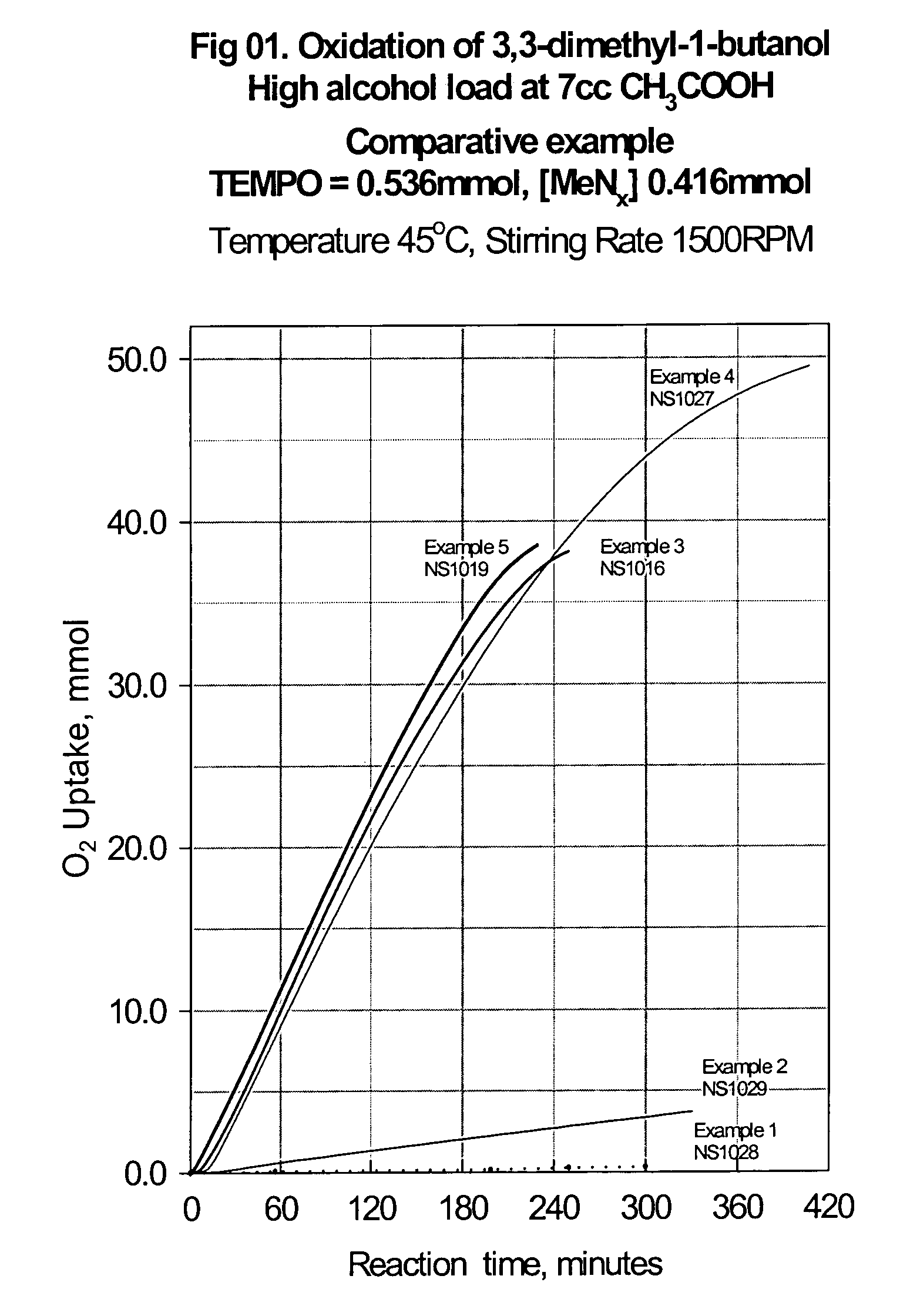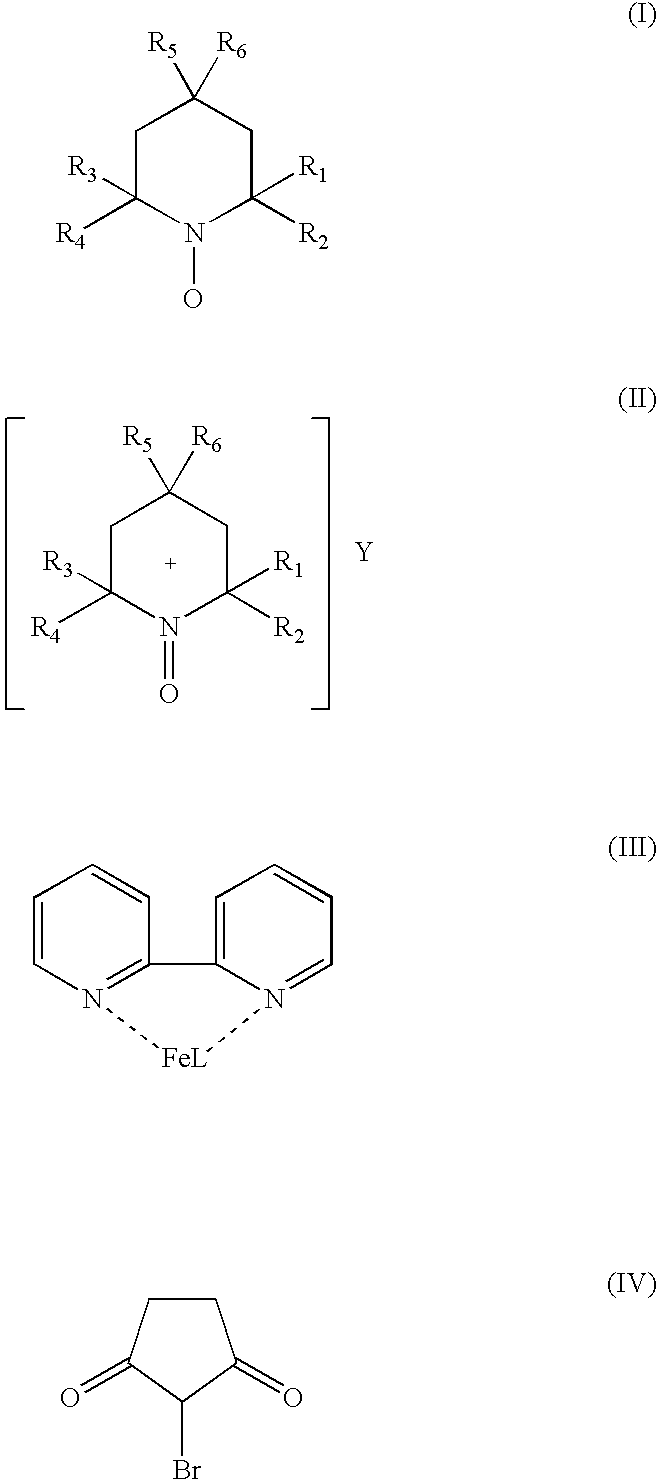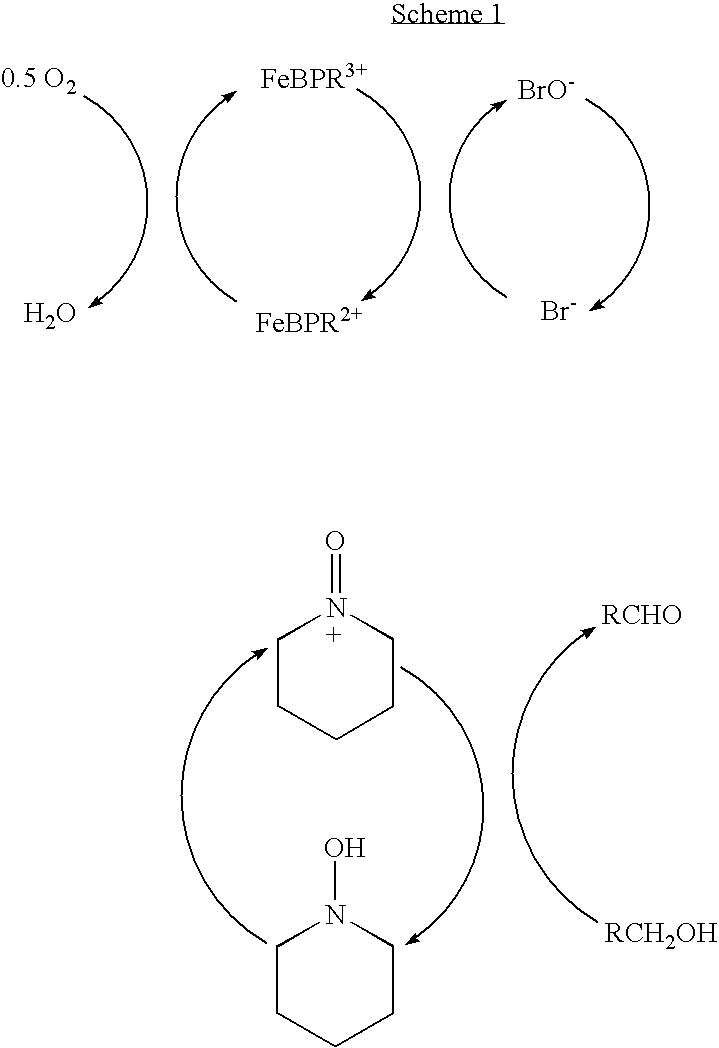Catalyst system for aerobic oxidation of primary and secondary alcohols
a catalyst system and alcohol technology, applied in the field of catalyst systems, can solve the problems of limited use of methods described, serious problems relating to their handling and disposal, and few efficient systems are currently availabl
- Summary
- Abstract
- Description
- Claims
- Application Information
AI Technical Summary
Benefits of technology
Problems solved by technology
Method used
Image
Examples
example i
Comparative Example 1
[0042]Example I represents a reference oxidation reaction under the conditions analogous to the one reported by A. Cecceto, F. Fontana, F. Minisci and F. Recupero in Tetrahedron Letters, 42 (2001) 6651-6653 which is represented to be one of the most effective catalyst systems for aerobic oxidation of alcohols with molecular oxygen The oxidation reactions were run in a constant volume, constant pressure volumetric system. The glass autoclave used for these experiments was a jacketed reaction flask equipped with a thermocouple, septa fitted addition port and a Teflon coated magnetic stir bar. The reaction flask was connected to an oxygen delivery unit in which gas uptake can be automatically measured and recorded with the progress of the reaction. The reactor is alternately evacuated and purged with oxygen at least five times and the temperature of the catalyst solution was raised to the target value of 45° C. under constant stirring at 1200 RPM.
[0043]The catalyst...
example ii
Comparative Example 2
[0044]Example II represents a second reference oxidation reaction under the same conditions as for Example I using the second catalyst system reported in the same source, Tetrahedron Letters, 42 (2001) 6651-6653:
[0045]51.0 mg of Mn(NO3)2H2O (0.205 mmol), 49.5 mg of Cu(NO3)2.6H2O (0.205 mmol), 85 mg TEMPO (0.536 mmol) are dissolved in glacial acetic acid (7 cc) and the solution transferred into a jacketed glass reactor. The reactor is alternately evacuated and purged with oxygen at least five times and the temperature of the catalyst solution is raised to the target value of 45° C. under constant stirring of 1500 RPM. When the temperature reached 45° C., 8200 mg of 3,3-dimethyl-1-butanol (76.6 mmol) are injected through the septum adapter using a gas tight syringe. The recorded oxygen uptake rate is 0.016 mmol O2 / min and the GC analysis after 300 min reaction time showed traces of the desired 3,3-dimethyl-1-butanal. The graphical presentation of this reaction is ...
example iii
[0047]Example III illustrates the oxidation of 3,3-dimethyl-1-butanol to 3,3-dimethyl-1-butanal using the catalyst system of the current invention:
[0048]170 mg of Fe(NO3)3.9H2O (0.416 mmol), 66 mg 2,2′-bipyridyl (0.416 mmol), 85 mg TEMPO (0.536 mmol) and 80 mg N-bromosuccinimide (0.45 mmol) are dissolved in glacial acetic acid (7 cc) and the solution transferred into a jacketed glass reactor. The reactor is alternately evacuated and purged with oxygen at least five times and the temperature of the catalyst solution is raised to the target value of 45° C. under constant stirring of 1500 RPM. When the temperature reached 45° C., 8200 mg of 3,3-dimethyl-1-butanol (76.6 mmol) are injected through the septum adapter using a gas tight syringe. The recorded oxygen uptake rate is 0.205 mmol O2 / min and the GC analysis after 250 min reaction time showed 95.2% conversion of the starting alcohol and 96.2% selectivity to the desired 3,3-dimethyl-1-butanal. The graphical presentation of this reac...
PUM
| Property | Measurement | Unit |
|---|---|---|
| reaction temperature | aaaaa | aaaaa |
| mol % | aaaaa | aaaaa |
| temperature | aaaaa | aaaaa |
Abstract
Description
Claims
Application Information
 Login to View More
Login to View More - R&D
- Intellectual Property
- Life Sciences
- Materials
- Tech Scout
- Unparalleled Data Quality
- Higher Quality Content
- 60% Fewer Hallucinations
Browse by: Latest US Patents, China's latest patents, Technical Efficacy Thesaurus, Application Domain, Technology Topic, Popular Technical Reports.
© 2025 PatSnap. All rights reserved.Legal|Privacy policy|Modern Slavery Act Transparency Statement|Sitemap|About US| Contact US: help@patsnap.com



